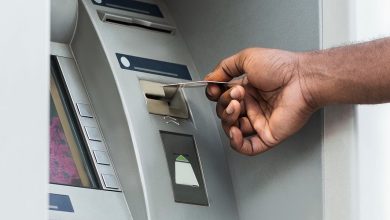BoG launches digital infrastructure report
The Bank of Ghana (BoG), in a pioneering collaboration with the Monetary Authority of Singapore and three other Central Banks and the Mastercard Foundation have launched a report on the foundational digital infrastructure necessary for an inclusive digital economy and seamless cross-border transactions across the globe.
The three others include the Monetary Authority of Brunei Darusalam, National Bank of Cambodia, and the Central Bank of Kenya.
The report notes that while digital solutions have helped improve the economic and social well-being of millions of people around the world, digital inclusion and interoperability with different devices remain as barriers. Thus, the report outlines four key areas for a foundational digital infrastructure: Digital identity, Authorization and consent, payments interoperability, and Data Exchange.
These four pillars enable end-to-end digital transactions as well as collectively meet the foundational needs of a digital economy.
“Digital infrastructure will enable interoperable solutions and seamless services – to reach more people and businesses, at lower cost and greater convenience. Public foundational digital infrastructures will be critical for inclusive economic and social development” Ravi Menon, Monetary Authority of Singapore said.
He further added that while digital revolution is swiftly transforming our world; “the next stage of the digital revolution is to move beyond fragmented digital solutions to digital infrastructure that will spur more pervasive digitalisation across economies and societies.”
For instance, pertaining to digital payments, the report emphasizes that a foundational digital infrastructure involving these four pillars will ensure that essential elements of digital payments, especially cross-border: know-your-customer checks; verifying accounts; sanctions screening; cheaper, faster, and more, secure payments.
Elaborating on the four pillars
The first pillar, digital identity, focuses on establishing confidence and trust from one end of the digital interaction to another. By ensuring that mechanisms are established to authenticate and validate individual’s identity, it provides privacy and security of information.
Authorization and content ensures that digital interactions are transparent, secure, and efficient. By this, it ensures the transparent use of data, as well as leverage individual consent.
For seamless payments to function globally, mechanisms must be established to ensure interoperability of systems. Although complex, payments interoperability involves the mechanisms by which two supervised entities clear and settle payments between their customers. It involves areas such as governance, technical and branding components.
Data exchange, scaled up through the use of open banking, provides a platform where businesses or individuals can consent to share financial and other data to third parties to use for the benefit of that individual or businesses.
Data exchange enables payments, financial planning, the creation of digital identity necessary to enable a digital economy.
The four countries with the exception of Singapore are at different stages of digital infrastructure development. Ghana has just introduced the national identity card (Ghana card) which marks the beginning of a universal national identity system. Cambodia is also building a digital infrastructure with digital identity at the core. The focus is to let end-users share data across different government ministries. Brunei is launching a single portal to access a variety of services, with the vision of digitally transforming the country.
“We hope this report will help players in the financial sector and broader technology community. [For the purpose of] better understand the key value drivers of a strong digital infrastructure, and inspire them to explore the digital infrastructure potential for cross-border use.”










